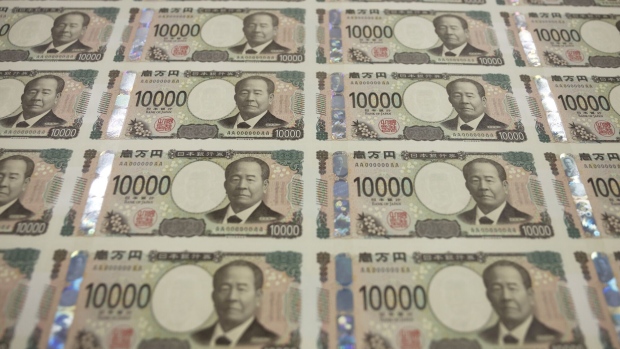Jun 29, 2023
Yen Weakens to 145, Approaches Last Year’s Intervention Level
, Bloomberg News

(Bloomberg) -- The yen fell through 145 per dollar for the first time since November, nearing a level where Japan intervened last year to support the currency for the first time since 1998.
The Japanese currency dropped as much as 0.2% to 145.07 amid a reignited focus on the monetary policy divergence between the East Asian nation and its major peers. Its decline to an almost eight-month low has spurred reminders from government officials that they are watching moves and stand ready to act.
Last year, the currency’s slide toward 146 triggered intervention, and in the buildup to that there were repeated official warnings.
The growing gap between Japan’s easy monetary policy and the hawkish bent of peers like the Federal Reserve continues to weigh on the yen, with some analysts pointing to the 145 level as important for officials. A lurch higher in global yields has favored other currencies with Japan still experiencing negative interest rates.
Perhaps Japan’s authorities “will opt for a small-scale intervention at some time in the next few weeks, just to keep speculators on their toes,” said Sean Callow, a senior currency strategist at Westpac Banking Corp.
“Hopefully, Japan realizes that the ratcheting higher of US yields when contrasted with dovish BOJ policy guidance means that a declining yen is fundamentally justified.”
Policymakers and business leaders appear far more sanguine about the recent slide than they were about last year’s collapse — a sign they may see any weakness as temporary.
Speaking just after the yen fell past the 145 level, Finance minister Shunichi Suzuki reiterated his stance that he will respond appropriately to excessive moves, saying that abrupt, one-sided moves are seen in the market.
Japan spent $65 billion last year on direct purchases of the yen to help drag it off a three-decade low versus the greenback.
--With assistance from Emi Urabe and Yuko Takeo.
(Adds comments from Suzuki, analyst)
©2023 Bloomberg L.P.






